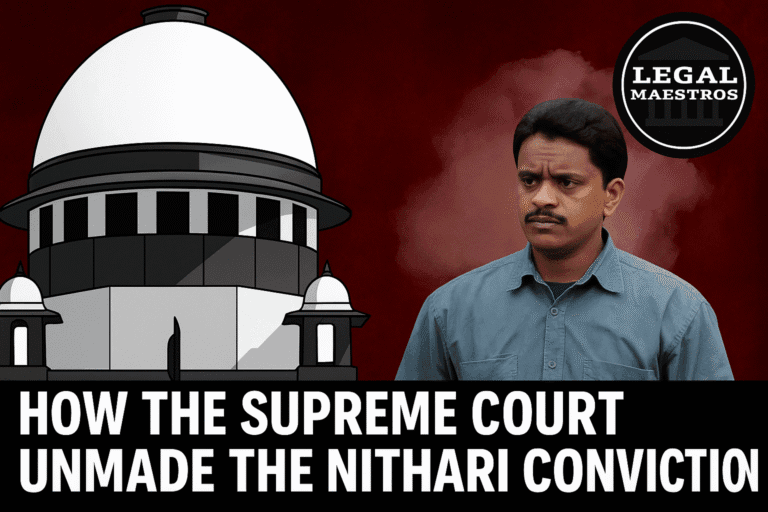
Since May 3, 2023, the state of Manipur has been immersed in violent confrontations between the Kuki-Zo tribes and the Meitei community, which is the bulk of the population. These hostilities have resulted in over 250 deaths and have forced more than 60,000 people to flee their homes.
Retaliations and communal violence broke out throughout the valley and hill regions of the state as a result of a recommendation made by the Manipur High Court regarding the status of Meiteis as a Scheduled Tribe.
In an effort to put an end to the unrest, the government of India sent security forces, which included the Central Reserve Police Force (CRPF) and the Assam Rifles, to set fire to homes, churches, and temples. As a result of the frequent flare-ups, the Union was obliged to take direct control in February 2025 under President’s Rule. This occurred at a time when the State administration was having difficulty containing the upheaval.
For any queries or to publish an article or post or advertisement on our platform, do call at +91 6377460764 or email us at contact@legalmaestros.com.
According to Article 371C of the Constitution, the President is granted the right to make orders that are specifically adapted to the demographics of Manipur.
Clause (1) grants the President the authority to establish a Committee of the Legislative Assembly that will be composed of members elected from the Hill Areas, to change the rules of business and the procedure of the Assembly, and to entrust the Governor with additional responsibility for the Committee’s efficient operation.
There is a requirement in Clause (2) that requires the Governor to report on the management of Hill Areas on a yearly basis, or as directed by the President. Additionally, this clause expands the executive authority of the Union to provide binding directives to the State respecting certain Hill Areas.
For any queries or to publish an article or post or advertisement on our platform, do call at +91 6377460764 or email us at contact@legalmaestros.com.
In March of 2025, the Union issued an order in accordance with Article 371C(1) that led to the formation of a Hill Areas Committee.
This was done in reaction to the fact that the violence was concentrated in both valley and hill districts.
The Committee is tasked with a number of responsibilities, including the examination of security measures, the supervision of relief distribution, and the recommendation of revisions to protocols for local administration. Concurrently, the Governor’s specific responsibilities has included coordinating between state and central agencies, ensuring that Union orders on military deployment and curfew enforcement are executed without any procedural hindrances, and ensuring that curfews are enforced.
For any queries or to publish an article or post or advertisement on our platform, do call at +91 6377460764 or email us at contact@legalmaestros.com.
Article 356 of the Constitution allows for the temporary subsumption of the Council of Ministers by the President’s Rule, but Article 371C guarantees that Manipur would continue to maintain its structural autonomy.
371C directs Union involvement via constitutionally specified bodies and functions, in contrast to the blanket central rule that applies to all situations. Despite the fact that it is inside a framework that is defined by central commands, this helps to alleviate worries over executive overreach by keeping the participation procedures of the Legislative Assembly.
Accountability is fostered by the Governor’s yearly reports, which include a need for openness about governance in vulnerable Hill Areas.
For any queries or to publish an article or post or advertisement on our platform, do call at +91 6377460764 or email us at contact@legalmaestros.com.
The imperatives of peace and the ideas of federalism continue to be a source of frustration and tension. The leaders of the state say that repeated central interventions under Article 371C pose a threat to the legislative sovereignty of Manipur, which in turn fuels views of foreign dominance.
On the other hand, civic activists and tribal organizations say that strong Union direction is essential in order to safeguard vulnerable populations and restore rule of law. This is particularly true when considering the limited ability of the state to police distant hill areas.
The Hill Areas Committee’s control and the deployment of central paramilitary troops have both contributed to a steady decline in the number of large-scale conflicts that have begun to occur.
For any queries or to publish an article or post or advertisement on our platform, do call at +91 6377460764 or email us at contact@legalmaestros.com.
The fact that legal structures are not sufficient to heal deeply seated ethnic grievances is shown by the rare occurrences that have occurred in places like as Churachandpur nevertheless.
In addition to constitutional reforms, observers emphasize the need of political discourse, steps to create trust, and attempts to enhance socioeconomic conditions in order to establish a durable peace.
Article 371C is an example of a sophisticated federal approach since it successfully strikes a balance between state sovereignty and central action. It makes it possible for the Union to exercise concentrated control without fully undermining the elected institutions of Manipur.
For any queries or to publish an article or post or advertisement on our platform, do call at +91 6377460764 or email us at contact@legalmaestros.com.
During the course of continuous conflict, the development of this mechanism may provide insight into future reactions in other North-eastern states that are experiencing turmoil of a similar kind. At the end of the day, the effectiveness of Article 371C is contingent upon cooperative governance, respect for local agency, and a continued commitment to reconciliation.




![Research Assistantship @ Sahibnoor Singh Sindhu, [Remote; Stipend of Rs. 7.5k; Dec 2025 & Jan 2026]: Apply by Nov 14, 2025!](https://legalmaestros.com/wp-content/uploads/2025/11/Gemini_Generated_Image_s0k4u6s0k4u6s0k4-768x707.png)
![Karanjawala & Co Hiring Freshers for Legal Counsel [Immediate Joining; Full Time Position in Delhi]: Apply Now!](https://legalmaestros.com/wp-content/uploads/2025/11/Gemini_Generated_Image_52f8mg52f8mg52f8-768x711.png)